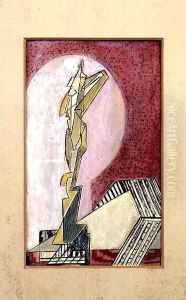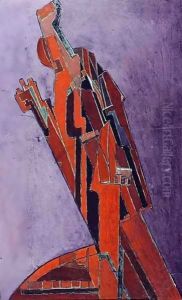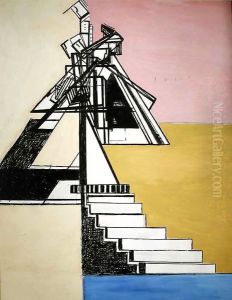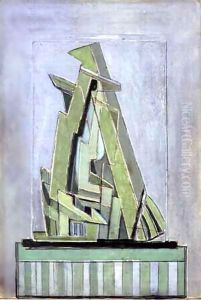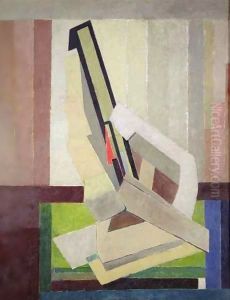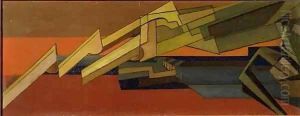Lawrence Atkinson Paintings
Lawrence Atkinson was a British artist, poet, and musician known for his contributions to the Vorticist movement in art and literature. Born on January 17, 1873, in Chorlton-on-Medlock, Manchester, Atkinson initially trained as a singer and performed in various concerts and recitals. His artistic career, however, took precedence following his exposure to Modernist ideas.
Atkinson's artistic journey was heavily influenced by his encounters with key figures in the avant-garde circles of early 20th-century Europe. He was associated with the Bloomsbury Group and had interactions with prominent artists and intellectuals, including Roger Fry and Ezra Pound. His work in the visual arts began to gain recognition during this period, and he became known for his abstract paintings and sculptures.
In 1914, Atkinson became involved with the Vorticist movement, which was initiated by Percy Wyndham Lewis and sought to express the dynamism of the modern world through a distinct combination of Cubist and Futurist styles. The movement was short-lived due to the outbreak of World War I but had a significant impact on the development of Modernist art in Britain. Atkinson contributed to the movement's key publication, 'BLAST,' and his work was featured in the Vorticists' 1915 exhibition at the Doré Gallery in London.
After World War I, Atkinson's style evolved, and he began to move away from the harsh, mechanical forms of Vorticism towards a more organic and lyrical abstraction. He continued to exhibit his works throughout the 1920s and also delved into sculpture, creating works that echoed the same abstract qualities found in his paintings.
Lawrence Atkinson's career as an artist was complemented by his achievements in poetry and music. He published several volumes of poetry, and his musical background informed the rhythmic and harmonic qualities of his visual art. Despite his multifaceted talents, Atkinson has often been overshadowed by other figures of the Vorticist movement. Nevertheless, his contributions to the development of abstract art in Britain and his role in the cultural milieu of the early 20th century are still recognized by art historians today.
Atkinson passed away on September 21, 1931, in London. His work has been exhibited posthumously in various exhibitions dedicated to the Vorticist movement and early British Modernism. While not as widely known as some of his contemporaries, Lawrence Atkinson remains an important figure for his contribution to the interplay between visual art, literature, and music in the Modernist era.
